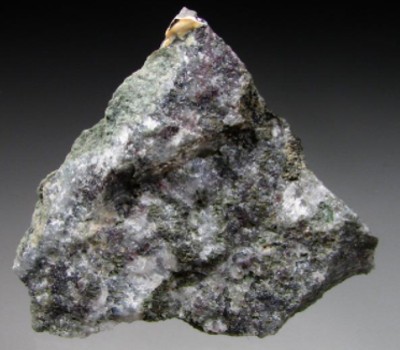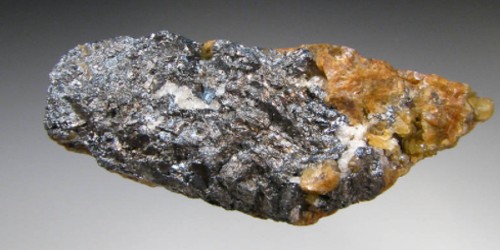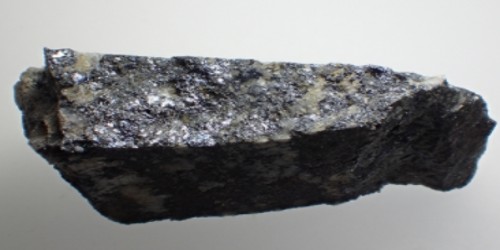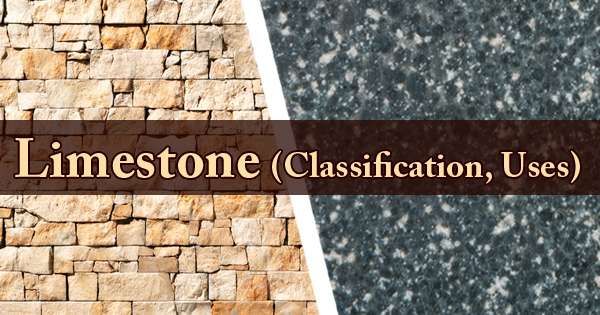Freieslebenite is a sulfosalt mineral composed of antimony, lead, and silver. Sulfosalt minerals are complex sulfide minerals in the formula: AmBnSp. The formula is AgPbSbS3. It is a mineral consisting of a gray metallic-looking sulfide of antimony, lead, and silver
It was discovered in approximately 1773 in the Himmelsfurst mines of Freiberg, Saxony, Germany. The mineral was initially called Schilf-Glaserz; however, in 1845 it was given the current name Freieslebenite after the Mining Commissioner of Saxony, Johann Carl Freiesleben (1774–1846).
General Information
- Category: Sulfosalt minerals
- Formula: AgPbSbS3
- Crystal system: Monoclinic
- Crystal class: Prismatic (2/m) (same H-M symbol)

Fig: Freieslebenite
Properties
Freieslebenite has a metallic luster and is opaque in transparency. The general colors for freieslebenite are gray, silver and white. It has a whitish-gray streak with a hardness of 2.5 on the Mohs scale. It has an imperfect cleavage and an irregular fracture. The density is 6.20-6.23 g/cm3.
- Color: Pale steel-gray to silver-white or lead-gray
- Crystal habit: Striated, prismatic crystals, inclusions and exsolutions in Galena and other silver minerals
- Fracture: Brittle-conchoidal
- Mohs scale hardness: 2.5
- Luster: Metallic
- Streak: Whitish-gray
- Diaphaneity: Opaque
- Specific gravity: 6.20-6.23
Occurrence
The occurrence of freieslebenite is commonly found in hydrothermal locations. A major finding of freieslebenite was located in the Hiendelaencina mining district in Spain (Frias, 1991). Freieslebenite can also be located in North and South America and throughout Asia and Europe. Deposits of freieslebenite can generally be located in proximity to minerals argentite, siderite, freibergite, polybasite, and aramayoite.
Association: Acanthite, pyrargyrite, silver, andorite, galena, siderite.
Information Source:
















